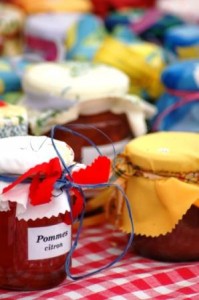… or how too many choices choke easy decision making
1995 was the year that the famous Jam Study was conducted in California. It’s not often that a single research project propels a university professor to the heights of fame, but that’s precisely what happened to Columbia Professor Sheena Iyengar.
Draeger’s Supermarket, an up-scale gourmet food market in Menlo Park, California, was the perfect test location. At the time, Draegers offered “roughly 250 different varieties of mustard, 75 different varieties of olive oil, and over 300 varieties of jam.” Additionally, shoppers regularly encountered tasting tables where they could sample an enormous variety of gourmet foods.
Iyengar and her team set up a table with an assortment of jams for purchase with a simple twist. Every few hours, she would re-set the table from 6 varieties of jam to 24 varieties and then back again. On average, prospective customers typically tasted two jams, and everyone who visited the table was offered a $1 discount coupon towards a purchase.
10X more people chose to buy …
Now, here’s where it gets interesting. A full 60% of the people who visited the tables were drawn to the large assortment, while only 40% chose to spend time at the small one. BUT, A WHOPPING 30% OF THE VISITORS TO THE SMALL TABLE BOUGHT JAM, while only 3 percent of those at the large assortment chose to buy!! 10X more people chose to buy when offered a smaller choice set.
When the researchers turned their sights on the impact of choice sets in US retirement savings plans, they discovered a similar pattern to the jam study. When only 2 investment funds were offered in the plan, almost 75% of the future retirees chose to participate. But for every ten new fund choices added, participation rates typically dropped by up to 2%. One plan they examined offered 59 fund choices; as expected, participation rates were below 60%!
The marketing lesson? Experiment with choice sets. Sometimes you will benefit by avoiding choice overload by keeping your choice set small and straightforward. But in other cases (think Starbucks’ menu of coffee variations), a wider assortment of options will also be desirable. Only testing will prove which method is best for you.
![]()
 by
by 